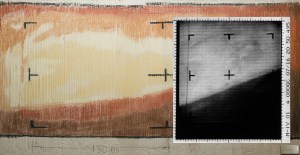Cassini Significant Event Report
For Week Ending 12/05/03
The most recent spacecraft telemetry was acquired from the Goldstone tracking station on Monday, December 8. The Cassini spacecraft is in an excellent state of health and is operating normally. Information on the present position and speed of the Cassini spacecraft may be found on the "Present Position" web page located at http://saturn.jpl.nasa.gov/operations/present-position.cfm .
On-board activities this week included transition from reaction wheels to the reaction control subsystem, uplink of Probe pre-heating checkout tests 1A and 2, execution of Probe test 1A with orbiter instruments in sleep and muted, uplink of the Composite Infrared Spectrometer flight software checkout, a Radio and Plasma Wave Science High Frequency Receiver calibration, and uplink of an Ion and Neutral Mass Spectrometer recovery mini-sequence to execute next week.
Deliveries were made for both the preliminary and official port 2 as part of the Science Planning Team process for C44.
The European Space Agency began the Huygens Mission Delta Flight Acceptance Review (FAR) with a kickoff meeting last week at the European Space Research and Technology Centre in Noordwijk, Netherlands. The overall purpose of the review is to examine the changes in the Huygens mission that have been implemented since the FAR that was conducted six months prior to launch. Specific objectives of the review are the validation of the new mission scenario designed to recover from the receiver anomaly, the re-validation of the entry and descent (with respect to the revised atmosphere model), and the confirmation of the readiness of operations preparations for the revised Huygens Mission. The review team has split into three panels to focus on each of the primary objectives. The panels will meet over the next six weeks to review the documentation and prepare requests for further discussion. There will be a final co-located set of panel meetings in early February and the review will conclude with a board meeting on February 13.
The Navigation team completed the third segment of team test and training. This segment included processing of the tracking data from Saturn Orbit Insertion to Tb, the second Titan encounter. Both the spacecraft and major satellite ephemeredes were estimated.
A Software Review/Certification Requirements meeting for Cosmic Dust Analyzer v9.2 flight software (FSW) was held this week. The FSW has been accepted to the project software library and approved for processing and uplink in January as part of C42 sequence activities.
A number of delivery coordination meetings were held last week for Telemetry, Tracking, Command & Data Management 28.1.1, Remote Terminal Interface Unit V3.0 software, Electronic Command Request Form V1.1, Cassini Operations Reference Encyclopedia 4.0, and E-Kernel Generation V1.1
The Cassini website has a new look. To comply with agency-wide portal design specifications, the Cassini website has rolled out a new graphics environment. Also new to the website are major content enhancements to the kids' section. To view the site go to: http://saturn.jpl.nasa.gov/index.cfm
Additional information about Cassini-Huygens is online at http://saturn.jpl.nasa.gov.
Cassini will begin orbiting Saturn on July 1, 2004, and release its piggybacked Huygens probe about six months later for descent through the thick atmosphere of the moon Titan. Cassini-Huygens is a cooperative mission of NASA, the European Space Agency and the Italian Space Agency. JPL, a division of the California Institute of Technology in Pasadena, manages the mission for NASA's Office of Space Science, Washington, D.C.
Media Relations Office
Jet Propulsion Laboratory
California Institute of
Technology
National Aeronautics and Space
Administration
Pasadena, Calif. 91109.
Telephone (818) 354-5011



































